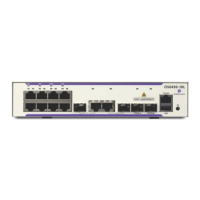page 21-34 OmniSwitch AOS Release 7 Network Configuration Guide March 2011
Configuring QoS
QoS configuration involves the following general steps:
1 Configuring Global Parameters. In addition to enabling/disabling QoS, global configuration includes
settings such as global port parameters and various timeouts. The type of parameters you might want to
configure globally depends on the types of policies you can configure. For example, if you want to set up
policies for 802.1p or ToS/DSCP traffic, you can configure all ports as trusted ports.
Typically, you need not change any of the global defaults. See “Global QoS Defaults” on page 21-30 for a
list of the global defaults. See “Configuring Global QoS Parameters” on page 21-35 for information about
configuring global parameters.
2 Configuring QoS Port Parameters. This configuration includes setting up QoS parameters on a per
port basis. Typically you do not need to change the port defaults. See “QoS Port Defaults” on page 21-31
for a list of port defaults. See “Classification” on page 21-6 and “Traffic Policing and Shaping” on
page 21-20 for information about configuring port parameters.
3 Configuring Queue Set (QSet) Profiles. The queue management configuration for the ingress virtual
output queues (VOQ) is applied using embedded QSet profiles. A default profile configuration is applied
when the switch comes up. Selecting different profiles is only necessary if the default profile settings are
not sufficient. See “Queue Management Defaults” on page 21-31 for a list of default profile settings. See
“Congestion Management” on page 21-10 for information about configuring QSet profiles.
4 Setting Up Policies. Most QoS configuration involves setting up policies. See “Creating Policies” on
page 21-39.
5 Applying the Configuration. All policy rule configuration and some global parameters must be
specifically applied through the qos apply command before they are active on the switch. See “Applying
the Configuration” on page 21-66.

